It's been said time and time again: The sales forecast is the most important number for the entire company. Hitting your number means achieving predictable revenue, which allows for confident investment in the business and sustainable growth. Missing your number leads to a domino effect of business challenges.
But simply knowing the importance of the sales forecast does not make the forecast more accurate. According to internal survey data, an astonishing 93% of companies are unable to forecast their number within 5%, even in the last two weeks of the quarter, which means that the vast majority of teams are, at best, making educated guesses for where they're going to land every quarter.
Luckily, with new innovations in predictive analytics and the rise of revenue operations, things are changing.

What are the 5 stages of sales forecasting maturity?
We sat down with Carl Eschenbach, Partner at Sequoia Capital, and Yamini Rangan, Chief Customer Officer at Dropbox, to discuss the importance of forecasting accuracy, and out of that conversation came this concept of the 5 stages of sales forecast maturity.
For background, Eschenbach took VMware from $30 million to $8 billion in revenue and Rangan played a central role in taking both Workday and Dropbox public, so they know a thing or two about creating a culture of forecast accuracy.
Our blog post featuring their learnings was so popular that we decided to make an infographic to further illustrate the concept. While every company forecasts in a manner dictated by the business, they will all (more or less) fall along this spectrum.
So what are the 5 stages? We explain below.
See the entire infographic at the end of this article.
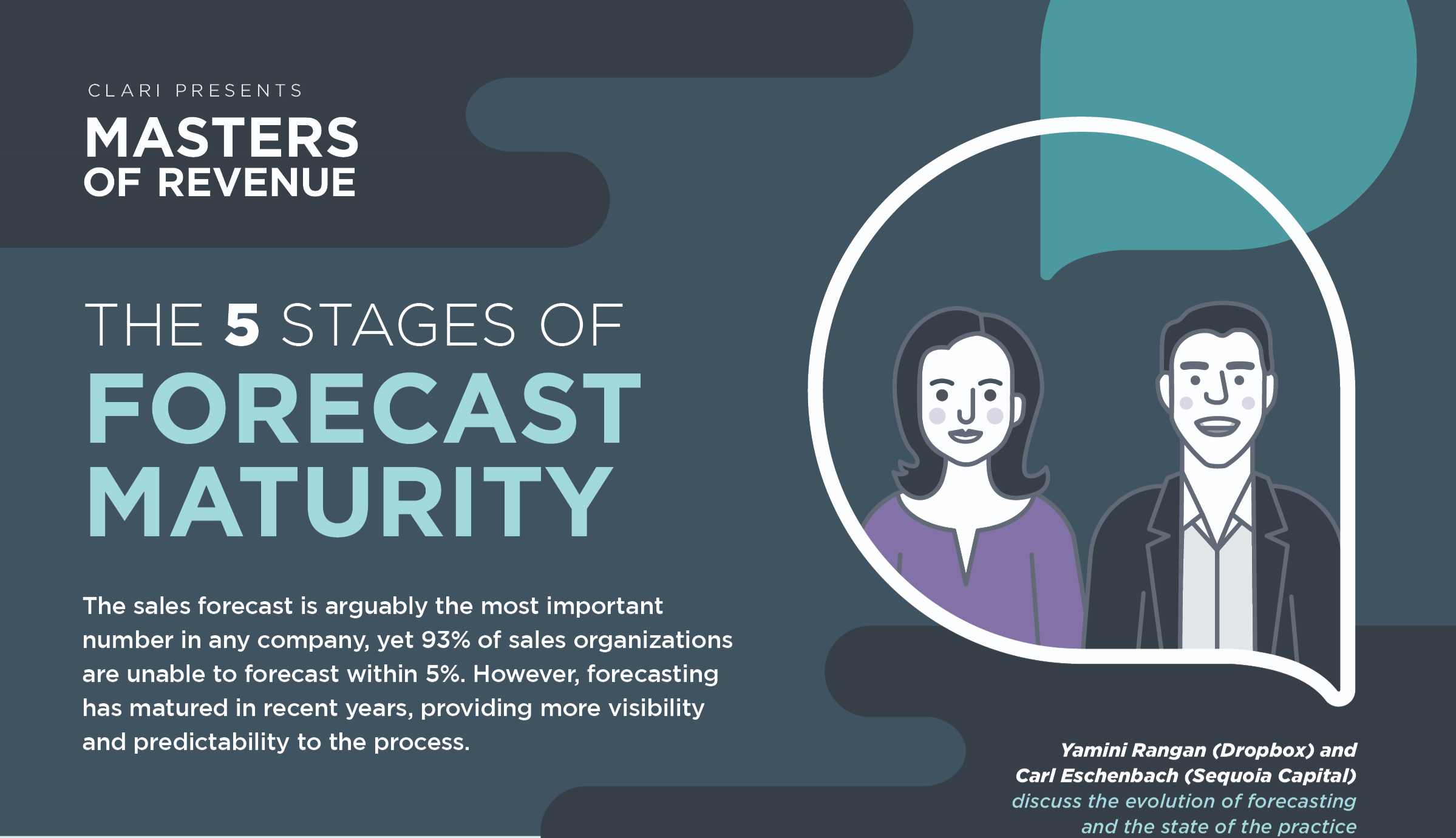
Sales forecast stage 1: verbal reporting and spreadsheets
Managers rely heavily on spreadsheets with disconnected data. Forecasts are highly manual and inaccurate. Rolling up the forecast every week is time consuming, painful, and is often riddled with problematic data. If this sounds familiar, you're not alone. But don't be fooled: It doesn't have to be this way.
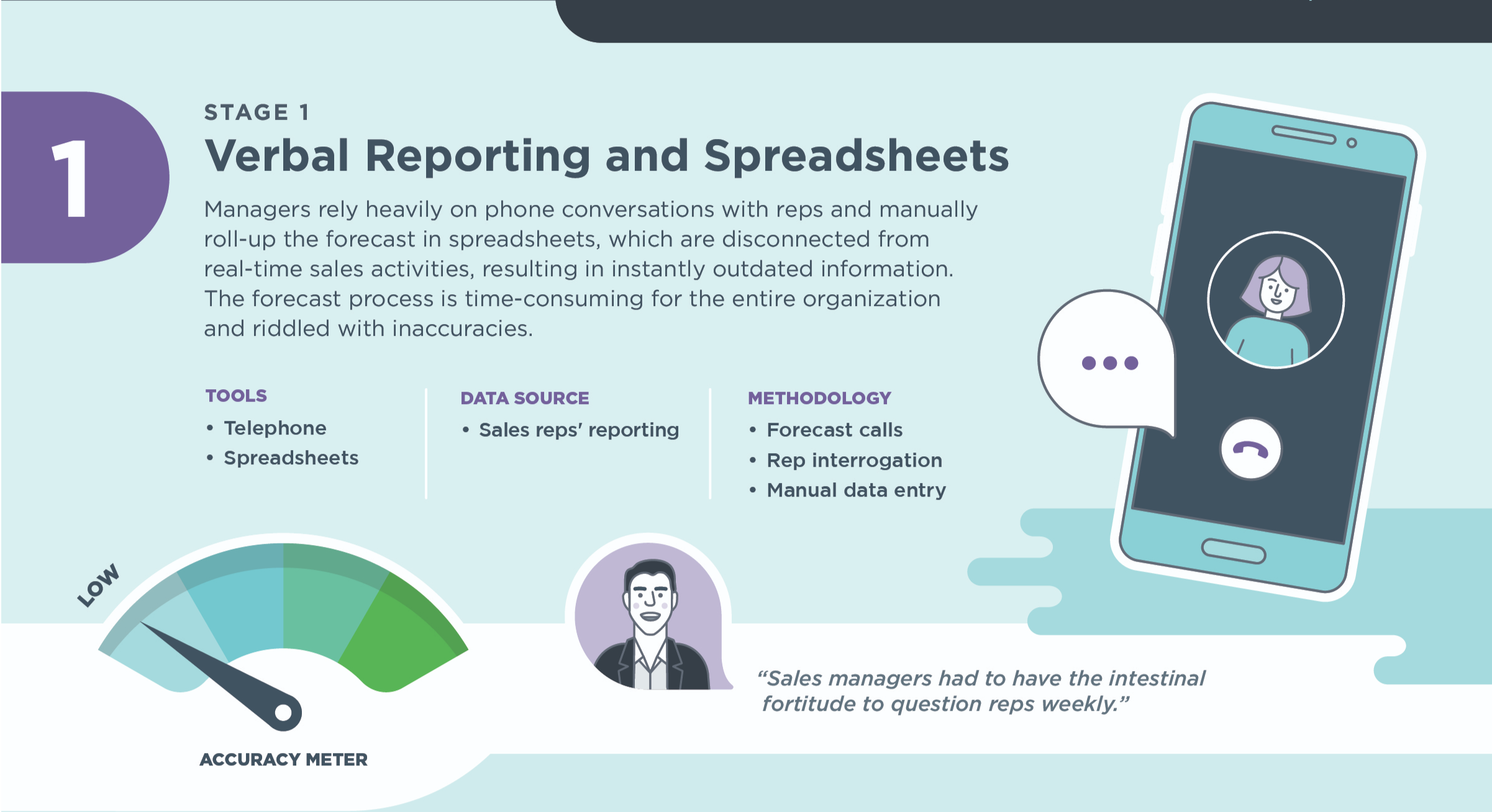
Sales forecast stage 2: CRM and aggregation
The CRM is the system of record in stage 2 and provides a centralized repository for reps and managers. The only problem: It requires reps to manually input data—which they don't. And who can blame them? It's in everyone's best interest for them to be spending their time closing deals, not on data entry. However, incomplete sales activity data leads to poor pipeline visibility and ultimately inaccurate forecasts. If only there were a way to automatically harvest that data and relieve reps of that time-consuming task. Enter stage 3.
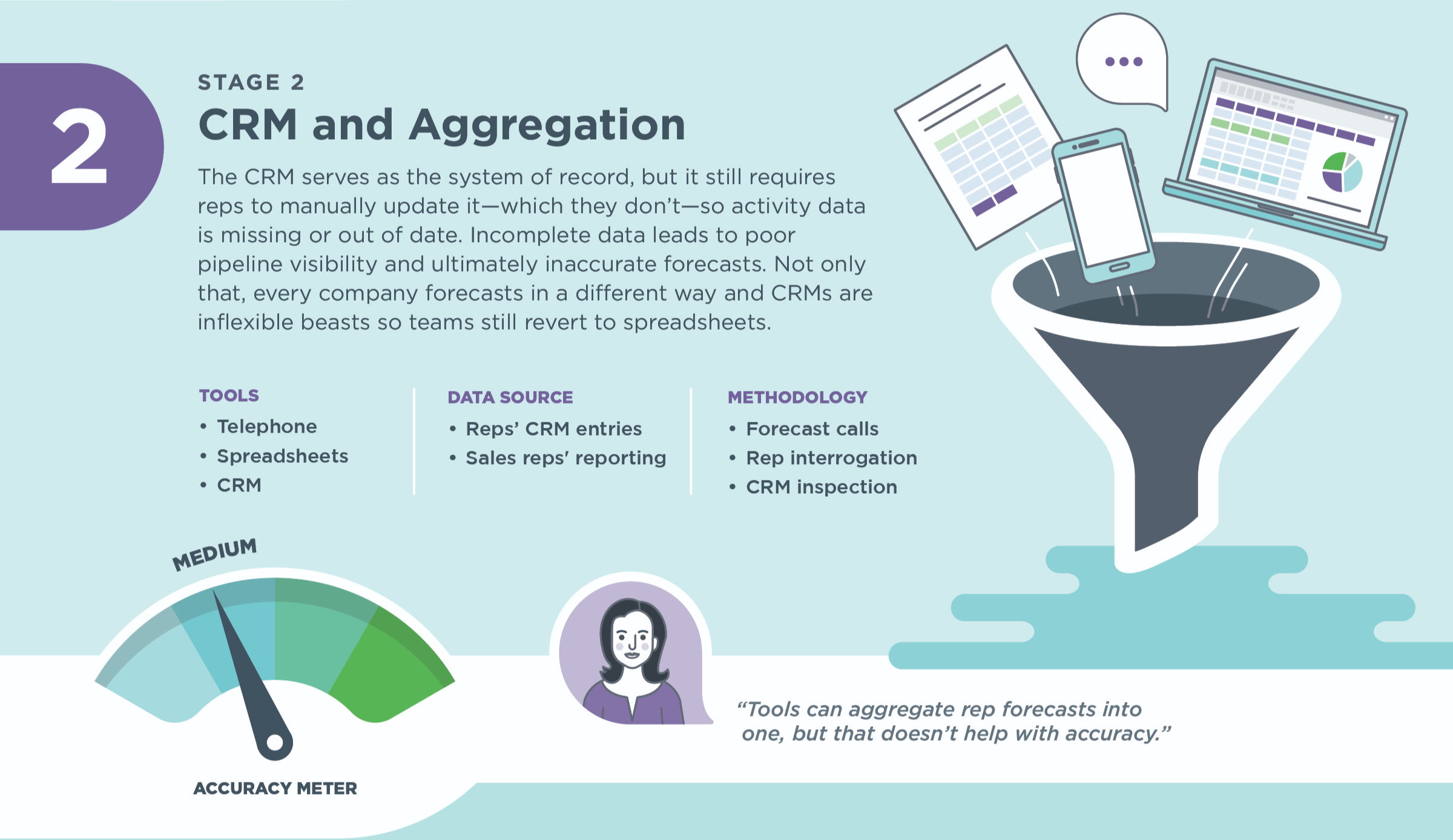
Sales forecast stage 3: automated data harvesting and inspection transparency
New technology with sales activity automation collects data for reps and logs it to a single source of truth which is visible to the entire revenue operations team. Managers can view the health of a deal at a glance, allowing them to spot risk and opportunity with ease and take action. Other functions within the revenue team, like marketing, can now use this data to re-engage stalled prospects or provide air support for key targets.
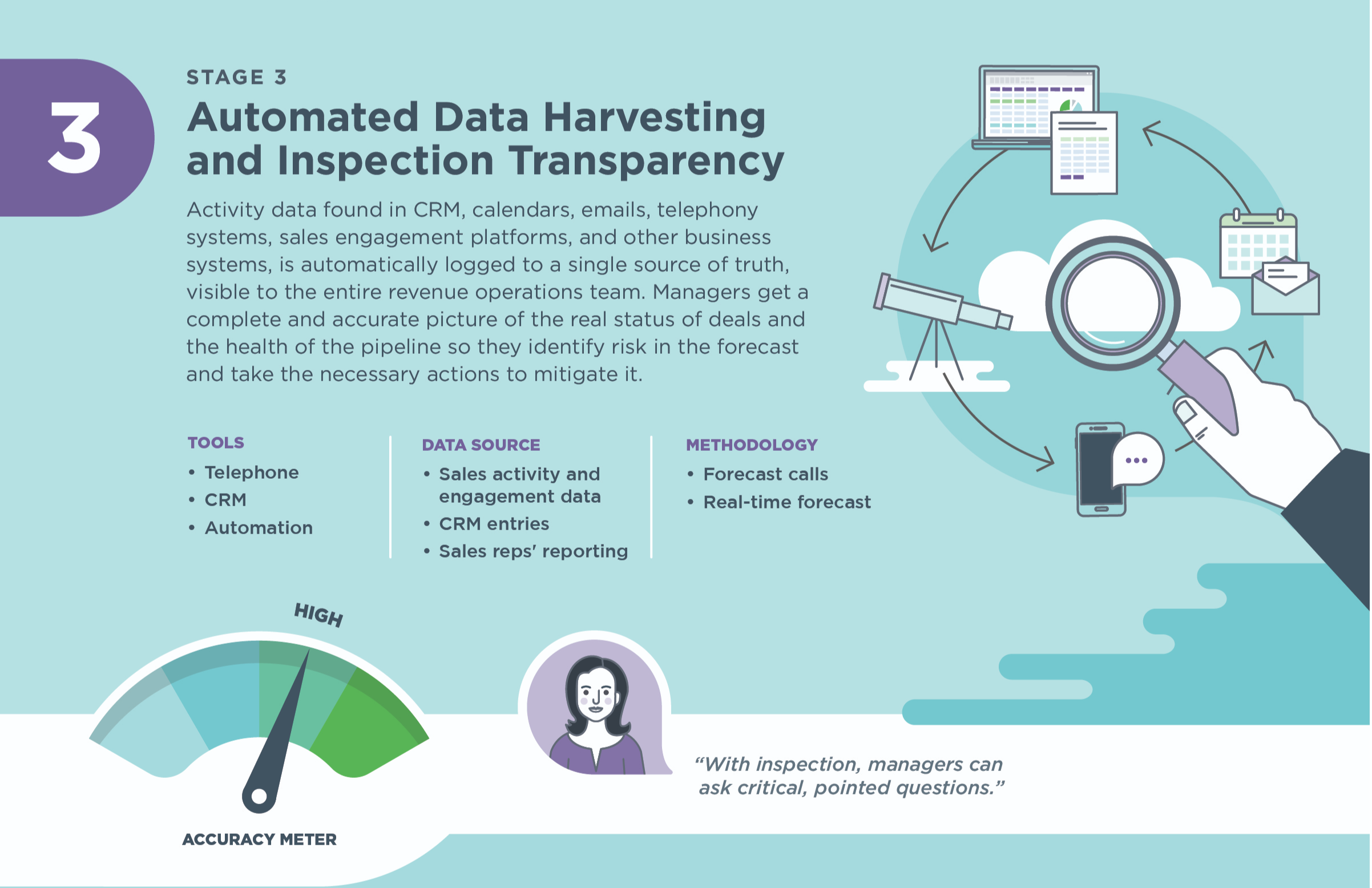
Sales forecast stage 4: predictive forecasting
With complete and accurate data comes new insights driven by predictive analytics and artificial intelligence. By analyzing historic deal and sales activity data driven by sales activity automation, the revenue operations organization can predict the outcomes of current deals for more accurate forecasts. AI predictions give teams visibility into future quarters and exactly how much pipeline build they need.
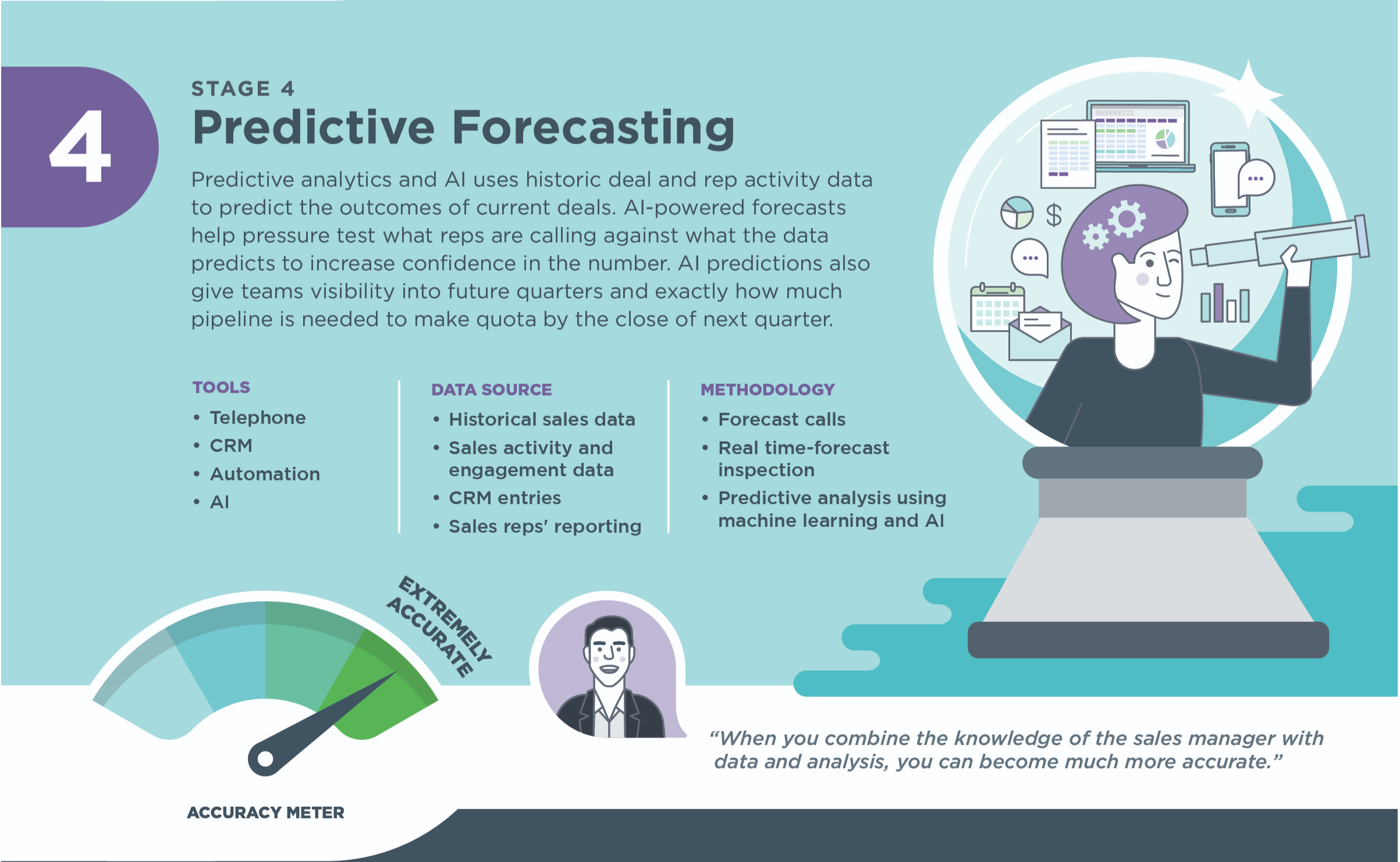
Sales forecast stage 5: forecasting as a team sport
The next stage of forecasting goes beyond simply consolidating a number; it's managing opportunities in real-time and harnessing past and present activity data to predict your number and land closest to the pin quarter after quarter.
In this final stage, the concept of the roll-up is long gone as the number is updated continuously throughout the month and the quarter. Current progress and future prediction are visible at all times, driving full-funnel accountability across the entire revenue operations team.
For more Masters of Revenue content, visit the Masters of Revenue page.



